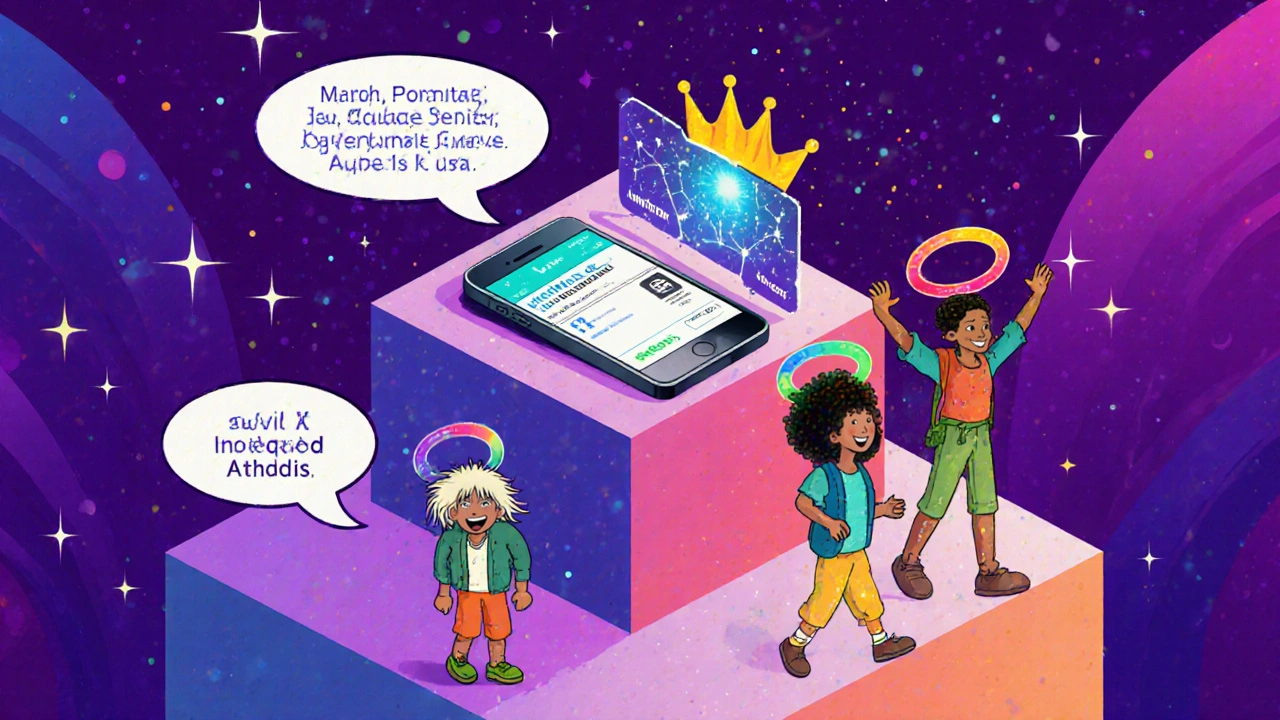Account Tier Calculator
How Your Verification Level Works
Based on your verification method, we'll show you your account tier, spending limits, and available features. All data matches the tiered systems described in the article.
Imagine signing up for a bank account in under five seconds-no passport, no driver’s license, no waiting days for paperwork. Sounds impossible? It’s already happening. Across the U.S., India, Brazil, and the UK, fintechs are letting people open accounts with nothing more than a phone number, a selfie, and answers to questions only they would know. This isn’t magic. It’s KYC without IDs-a smarter, faster way to verify identity without traditional documents.
For years, banks demanded paper IDs to comply with anti-money laundering rules. But millions of people never had those documents. New immigrants. Young adults. Rural communities. People without credit histories. They were locked out-not because they were risky, but because the system didn’t know how to see them. Now, tiered accounts are changing that. Instead of one-size-fits-all verification, financial services now offer levels: basic, standard, and full. Each level unlocks more features, based on how much you’ve proven who you are.
How Non-Documentary Verification Works
KYC without IDs doesn’t mean no verification. It means verification without physical documents. Instead of uploading a photo of your ID, systems use digital signals to confirm your identity. These signals come from four main sources:
- Database cross-referencing: Your name, address, and phone number are checked against government, utility, and credit records across 30+ countries. If your address matches a recent electricity bill in the system, you’re verified.
- Knowledge-based authentication (KBA): You’re asked questions like, "Which of these three addresses did you live at in 2021?" or "What was the amount of your last credit card payment?" These aren’t random-they’re pulled from your financial history.
- Credit bureau matching: Systems pull data from Experian, TransUnion, and Equifax. If your name and Social Security number align with your credit file, even without a photo ID, you pass.
- Biometric checks: A live selfie with a blinking or head-turn prompt confirms you’re a real person-not a photo or deepfake. Facial recognition tech has improved so much that false matches are now under 0.1% in top systems.
This all happens in under five seconds. Sumsub’s data shows users complete verification 89% faster than with document uploads. That’s why iGaming and trading platforms saw conversion rates jump by up to 27% after switching.
Tiered Accounts: Start Small, Grow Trust
Not all accounts need the same level of access. That’s why tiered systems exist. Think of it like a membership: Level 1 gets you in the door. Level 2 gives you more room. Level 3 unlocks the whole building.
In the U.S., FinCEN allows non-documentary verification for accounts with limits under $1,000 per month. Chime, a popular neobank, uses this model:
- Level 1 (Basic): Verified with phone, email, and KBA. Daily spending limit: $1,000. Can receive direct deposits. Can’t send wire transfers.
- Level 2 (Standard): Verified with credit bureau data and biometrics. Daily limit: $5,000. Can send domestic transfers.
- Level 3 (Full): Verified with a government ID. Daily limit: $10,000. Can send international wires, buy crypto, access loans.
This approach keeps fraud low while removing barriers. A student in Atlanta can open a Chime account in 90 seconds to get paid from their part-time job. Later, when they land a full-time role and want to send money to family abroad, they can upgrade-by submitting a photo of their ID. No upfront hassle. No rejection. Just progression.

Who Benefits the Most?
People without traditional IDs are the biggest winners. Consider Maria, a 22-year-old from Guatemala who moved to Miami last year. She doesn’t have a U.S. driver’s license yet. Her credit file is thin because she’s new to the system. Before tiered KYC, she’d have been turned away from most banks. Now, she opens a Chime account using her phone number, a selfie, and answers about her past rent payments (verified through her landlord’s digital system). She gets paid weekly, pays her bills, and saves $200 a month.
Same goes for young adults. In the U.S., 42.7% of people under 25 have no credit history, according to the CFPB. Traditional KYC shuts them out. Non-documentary methods? They use their phone usage, streaming subscriptions, or even their university email to prove identity. A 2023 study by Delta Advisors found that 61% of users under 25 who were rejected by document-based systems passed with tiered verification.
Even in emerging markets, this is life-changing. In Nigeria, fintechs like Opay and PalmPay use tiered KYC to let farmers and small vendors open accounts using just their phone number and voice verification. No ID? No problem. They can receive payments, pay for fuel, or buy seeds-all without stepping into a bank.
The Catch: When It Fails
It’s not perfect. The same system that helps Maria can reject someone else.
People with thin credit files-like recent immigrants, the underbanked, or those who’ve never used credit cards-often get flagged. Shufti Pro’s users on Trustpilot report false rejections because the system can’t find enough data to match. One user wrote: "I’ve lived here 10 years. I pay rent. I have a job. But the system says I don’t exist."
That’s why companies like Mercado Pago in Brazil built custom algorithms. They don’t just look at credit history. They check utility payments, mobile top-ups, and even how often you log into your app. If you’ve been consistent for six months, you’re verified-even if you’ve never had a loan.
Another issue? Speed. While most verifications take under five seconds, 8.3% of users (based on Reddit community data) face delays of 12 to 24 hours when systems can’t match records. That’s frustrating when you’re trying to pay rent or send money to a sick relative.
And then there’s regulation. For transactions over $10,000, or any cross-border wire, U.S. and EU laws still require a government ID. Tiered systems don’t remove those rules-they work around them. You can’t send $20,000 to your cousin in Mexico without proving who you are. But you can send $500 today, and upgrade tomorrow.

What’s Next? AI, Decentralized ID, and Global Standards
The next wave is even smarter. In March 2024, the U.S. Treasury updated its rules to explicitly recognize multi-layered non-documentary verification as compliant. That’s a big deal-it means banks can now legally use AI-driven systems without risking fines.
Companies are adding new layers:
- Real-time utility bill verification (Sumsub now checks electricity and water records in 30+ countries).
- Biometric liveness detection (Jumio’s May 2024 update stops fake selfies with motion analysis).
- Self-sovereign identity (World Bank predicts 45% of verifications will use blockchain-based digital IDs by 2027).
And regulators are catching up. The EU’s Digital Identity Wallet proposal now endorses tiered KYC. The UK’s FCA allows non-doc verification for weekly limits under £1,000. Nigeria’s 2023 fintech guidelines mirror the U.S. and EU models.
But the biggest challenge remains inclusion. The Federal Reserve found that 14.1% of U.S. adults-about 35 million people-would struggle with any digital-only verification. That’s why the smartest platforms don’t replace document-based KYC. They layer it. They offer alternatives. They give people choices.
Why This Matters for Financial Inclusion
Financial inclusion isn’t just about access. It’s about dignity. It’s about not being told you’re too risky because you don’t have a birth certificate or a credit card. Tiered KYC without IDs doesn’t just make onboarding faster. It makes finance fairer.
By 2028, the global market for non-documentary verification will be worth over $5.6 billion. But the real value isn’t in the dollars. It’s in the people. A farmer in Kenya who can now save for his child’s school fees. A single mom in Detroit who can finally build credit. A college student who gets paid on time because her employer uses a fintech that doesn’t ask for paperwork.
This isn’t the future. It’s happening now. And it’s not about replacing old systems. It’s about expanding them-so no one gets left behind because they don’t have the right piece of paper.
Can I open a bank account without any ID at all?
Yes, but with limits. Many U.S. neobanks like Chime and Varo let you open a basic account using your phone number, email, and answers to personal questions. These accounts usually have daily spending limits (around $1,000) and can’t send wires or buy crypto. To unlock higher limits, you’ll eventually need to submit an ID.
Is KYC without IDs safe from fraud?
For low-risk transactions, yes. Non-documentary systems use multiple layers-credit checks, biometrics, and database matches-that make fraud hard. But they’re not foolproof. High-risk transactions (over $10,000) still require documents. Firms using tiered systems report 15-22% fewer false positives than traditional KYC, meaning fewer innocent people get blocked.
Why do some people get rejected even if they have a steady income?
Because many systems rely on credit history or past financial records. If you’ve never used credit cards, taken out loans, or had utility bills in your name, the system has nothing to match against. That’s why companies like Mercado Pago now use alternative data-like mobile payments or rent receipts-to verify users with thin files.
Are there any countries where KYC without IDs isn’t allowed?
Most major economies allow it with limits. The U.S., UK, EU, Brazil, India, and South Africa all permit non-documentary verification for low-risk accounts. However, some countries still require physical documents for any account opening. Always check local regulations-especially if you’re using a global platform.
How much does non-documentary KYC cost for businesses?
Per-verification costs range from $0.60 to $0.75 for basic checks. Enterprise deals can be cheaper at scale. Setup costs are $15,000-$85,000 depending on integration complexity. But companies save money by cutting manual reviews-Stake, an Australian trading platform, saved $2.3 million annually after switching to tiered non-doc verification.
Will this replace traditional ID verification?
No. It complements it. Low-risk users get fast, digital verification. High-risk users-those sending large transfers or applying for loans-still need documents. The future is hybrid: start simple, upgrade when needed. It’s not about replacing ID checks. It’s about making them optional for the right people at the right time.
